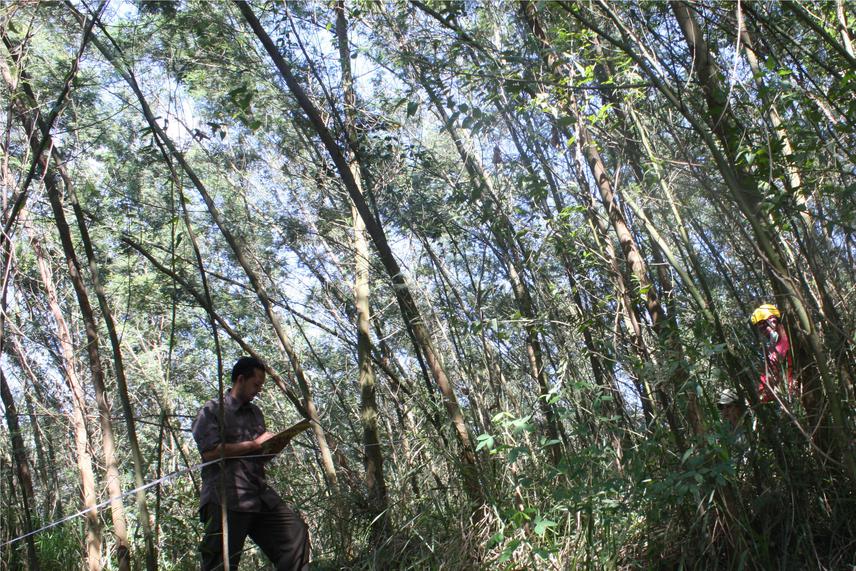Sutomo Sutomo
Other projects
20 Sep 2011
Establishments of Plant Species Diversity Following 2010 Catastrophic Eruption of Mt Merapi, Java Indonesia: Implication for Conservation and Restoration
11 Jul 2014
Conservation of Tropical Savanna Ecosystem through Better Understanding of Invasive Alien Species
Mt. Merapi has periodic eruptions that left the forest to become disturbed and fragmented. Some of these areas are in a successional process. Before the 2010 eruption, there were other eruptions such as in 2006 and 1994. From different perspectives, colonizers species can also be an invasive. These studies will aims to identify colonizer species in each of the areas and assess them weather or not they will become invasive and to understand the correlation between successional ages and species diversity with distribution and abundance of invasive species.

Sampling in Acacia decurrens stand.
There are extensive projects on the impact of invasive plants on native biota in forest landscape. However, few projects have looked at the effects of fragmentation on the success of as well as the subsequent effect of the invaders on native species in fragments. Moreover, most studies only focus on single species or single trophic level. It is important to study the impacts of forest fragmentation and associated plant invasion on the community. Community-level study will provide a full understanding to frame habitat fragmentation and biological invasion. One major threat for native biota in fragmented forest is the introduction of invasive species. Invasive species are considered to have negative impact on ecological integrity of an ecosystem and its native biota, and they have caused major economic losses in agriculture and forestry sector.
Understanding the impact of forest fragmentation and its associated plant invasion on native plant species in Indonesia is essential to develop effective and appropriate policy and natural resource conservation-management strategy. The distribution and abundance of native and alien species data along the gradient of the microclimate gradient will be obtain. Furthermore, the project will also resulted in the risk assessment of potential alien and native species to become invasive (weed risk assessment) which will be of important information to conservation management. Community awareness on the impact of landscape disturbance and on the importance of conservation to prevent native biodiversity loss will also be considered by publishing it in photo book and scientific paper.